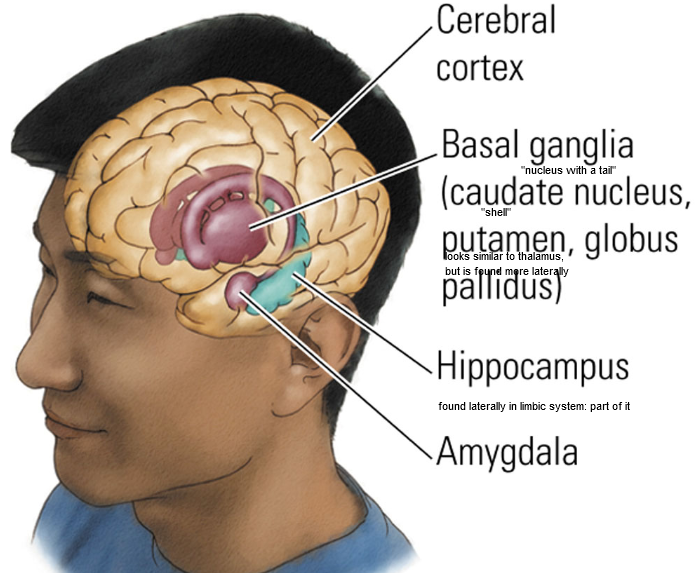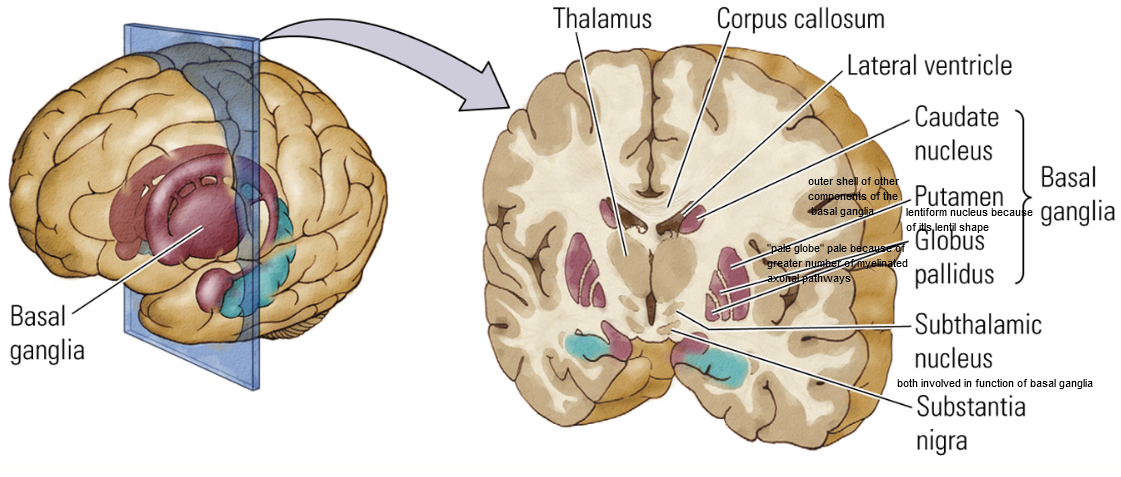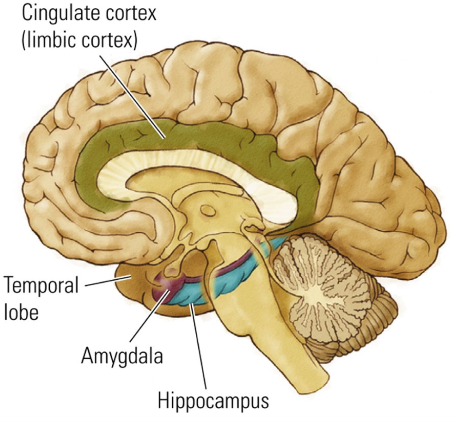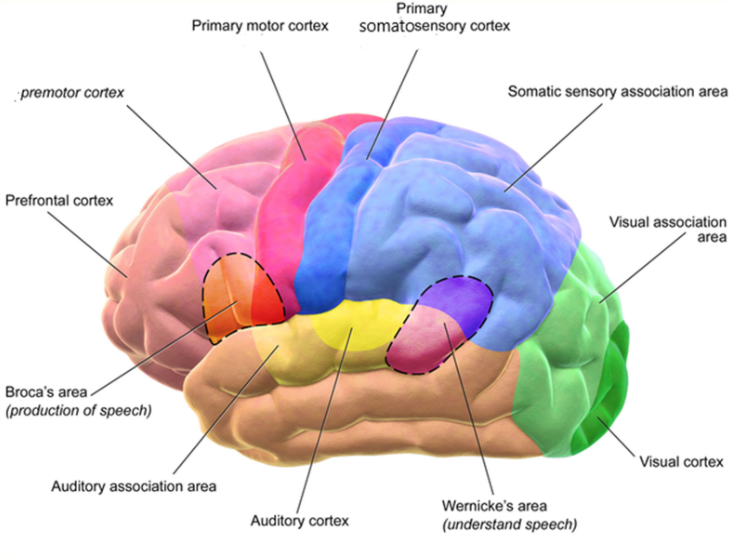Psych 255 (2.9)
1/14
There's no tags or description
Looks like no tags are added yet.
Name | Mastery | Learn | Test | Matching | Spaced |
|---|
No study sessions yet.
15 Terms
Forebrain
Most recently developed part of the brain as well as the largest part of the brain in mammals, exerts most high level sophisticated processing
three parts: neocortex, limbic system, basal ganglia

Basal Ganglia
Group of nuclei important for controlling voluntary movements (not producing movements primary motor cortex in the frontal lobe does this)
two main pathways: 1. end result is allowing for release of movement, for greater force of movement. 2. end result inhibiting movement for lesser force of movement.

Why is the basal ganglia important for controlling movement?
helps normal motor movement occur by sending messages to the motor cortex, to refine the movements it's making. also helps in controlling the force/exertion (inertia) behind a movement.
How does the basal ganglia allow us to move with more/less force?
it does this by receiving a message from frontal motor regions and refining that message and sending it back to those regions to allow for more/less force depending on the sensory information being received (process happens all the time)
Limbic ("border/hem") System
a group of interconnected brain structures Involved in emotion and memory processing. creates border/hem in higher brain regions in neocortex and lower sub cortical regions
Has 3 mains structures: the amygdala, hippocampus, and cingulate cortex.

Controversy behind limbic system
Many things, because of the functional aspect of the limbic system, are considered (debated) to be part of the limbic system. Prefontal-cortex: involved in emotion processing, but not part esp. on a structural perspective and too high level emotional processing
Amygdala "almond" but think emotion. Threat detector.
Critically involved limbic system structure in initial production and perception of emotion processing usually negative emotion (fear+anger). Also getting info from sensory regions and cognitive processing regions then assesses emotional significance of that info (see whether there's a threat) and triggers appropriate behavioral responses.
Helps in recognizing emotions in others and other species.
How does the amygdala work in people with anxiety and depression? Or when the amygdala is damaged/does not work?
In people with anxiety and depression, amygdala is hyperactive, and when treated, it goes back to normal. In animals with damaged/not working amygdala they are very calm all the time because they can longer sense threats.
Emotion processing regions of the brain considered as limbic system regions that are usually associated with positive emotion
nucleus accumbens + septal nuclei (form part of reward circuitry that makes us want to take part in pleasurable activities repeatedly, so addiction as well).
Insular lobe involved in perception of disgust.
Hippocampus
Limbic system structure essential for memory and spatial navigation.
Forms episodic memories (about one's self) and semantic memories (factual info).
Critical in forming new memories, but not where they are stored.
Only part of the adult human brain where new neurons are formed (neurogenesis).
Hippocampus and stress
involved in stress regulation also sensitive to effects of stress. Cell death occurs in prolonged high levels of stress (excitotoxicity). Has receptors for cortisol, has pathways to hypothalamus helping to turn off stress response, when stressor is no longer present.
Cingulate Cortex
Limbic system structure involved in cognitive and emotional processing.
Active when we are experiencing emotion, when we feel pain, experience regret, thought processing
Involved in empathy and understanding and knowing the emotions of others and predicting another person's intentions.
Controlling emotion and regulating emotion so we can consciously try to make ourselves more happy and decreasing an emotion we are experiencing.
Works with the higher cortical regions surrounding it.
Cingulate cortex and shared functions
anterior regions have shared functions with the prefrontal cortex, posterior regions have shared functions with the parietal cortex.
Thought processing (prefrontal cortex)
Controlling emotion (prefrontal cortex)
Spacial cognition (parietal cortex)
Paying attention, planning, decision making and coming up with a strategy and knowing when to stick to it or adapt it, error detection. (parietal and prefrontal cortex)
Cortex
Outermost brain layer of the brain with four lobes divided by fissures. Very large surface, but very thin..
Connected to all other regions of the brain.

Why is the cortex considered the creator of our reality?
At this level we are able to consciously perceive sensory info and further process that info, so we can understand what we are seeing, form memories of that, and use memories to understand what we are experiencing, where we can germinate a response to that info